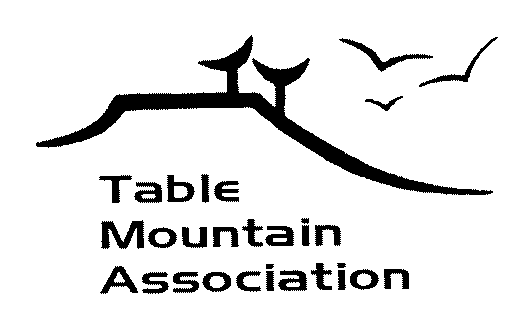
WHERE DOES OUR WATER COME FROM, ANYWAY?
by Suzanne Webel
Things have always been pretty dry here in northeast Colorado. Before last summer we had enjoyed several of the wettest years on record, but the drought of 2000 was a wake-up call for many. Perhaps you have wondered where much of our water comes from.
When the first pioneers straggled across the plains, they called this area "the Great American Desert." On average, the area east of the Continental Divide receives only about 14 inches of moisture each year (compared with the west side, which receives 80 inches or more). The early miners diverted water from Left Hand and St. Vrain Creeks into shallow ditches for their placer operations, and farmers created reservoirs to try to catch some of the water from mountain runoff. But there was never enough water, and even as far back as the 1890's people were beginning to dream of ways to bring some of the water from the west side of the mountains to the east.
In 1937, Colorado's largest trans-mountain water diversion project was authorized. For the next 19 years, engineers hollowed out the core of the mountains and created huge canals. As a result, a snowflake that falls on the Western Slope can melt and then pass through an assortment of 35 miles of tunnels, 95 miles of canals, five power plants, and 12 reservoirs, before finding its way to the farms, factories, and 30 municipalities along the Front Range. They say that a single drop of water is used, recovered, filtered, and re-used nearly a dozen times before it leaves our state.
The Northern Colorado Water Conservancy District (NCWCD) is the quasi-public agency that was set up to administer this engineering marvel.
The Colorado-Big Thompson (C-BT) system is designed to collect and deliver up to 310,000 acre-feet of water annually from the headwaters of the Colorado River west of the Continental Divide, pumping the water via the Alva Adams tunnel (a 13-mile-long "straw" half a mile underneath Rocky Mountain National Park) to its destination east of the mountains. To excavate the tunnel, they started digging toward the middle from each end. When the two crews met, they were "off" by only the thickness of a dime!
When the project was completed in 1957, 98 percent of the C-BT water was applied to farmland, with cities using the rest. The value of C-BT water is that it can be transferred easily from one owner to another, and from the land it was originally associated with, to be used anywhere in the District- an enormous area encompassing 1.5 million acres (stretching 150 miles across from west to east, and 65 miles from north to south). By 1996, municipalities and industry had overtaken agriculture as the primary users of C-BT water.
In fact, water has become almost as precious as gold, and the people who can afford it are not the farmers. In 1996, a unit of C-BT water (historically, an average of 0.7 acre-feet) sold on the open market for $2,200. By 1998, that value was $3,600; a year later, $7,000. Three months into 2000, there was a confirmed sale of $15,000; by the end of last year, the price hovered around $20,000 (it has reportedly settled back down to the mid-teens since then).
The NCWCD estimates that it will take the equivalent of three entire additional river basin drainages to supply adequate water for the growing Front Range. Environmentalists and others have blocked all recent attempts at building new reservoirs. Aggressive municipalities like Thornton and Arvada are buying up thousands of acres of farmland many miles away, with the specific intention of stripping them of their valuable C-BT water. Is this a good thing? Some people argue that it's the free market at work and we shouldn't fight progress, that whoever wants a commodity badly enough should be allowed to pay whatever it takes, that nature never intended for those farms to be productive in what had been the Great American Desert. Others argue that allowing farms to shrivel up and blow away will forever extinguish part of our common agricultural heritage, it will make crops and produce more expensive for the consumer, and will have unforeseen long-term environmental consequences.
Whatever you believe about the politics of growth, an incontrovertible fact is that the Colorado-Big Thompson Project has an enormous influence on the Table Mountain area. The following graphic (unavailable online) shows that we are precariously close to "the end of the line" of this complex system. The Boulder Creek Feeder Supply Canal, which flows south from Lyons, along the east side of Table Mountain, to Boulder Reservoir, is represented in our area by the pipeline between the spigots of the St. Vrain River and Left Hand Creek. Silent, swift and powerful, the 13-mile-long canal carries approximately 200 cubic feet per second of water at its peak in the summer.
An old saying is that water flows uphill toward money. Raw C- BT water can be "traded" uphill from the canal by exchanging C-BT units for, say, Left Hand shares, which are then treated and turned into drinking water at the Spurgeon Treatment Plant southwest of Table Mountain by the Left Hand Water District, which now supplies domestic water to many of us, as well as homes east into Weld County. Many people in our area use C-BT water from the Boulder Creek Feeder Supply Canal to irrigate their fields, and to keep our creeks, ponds and reservoirs full for wildlife's enjoyment as well as our own.
Indeed, the Boulder Creek Feeder Supply Canal has many purposes. And it makes a fundamental contribution to the quality of life we have come to know and love in the Table Mountain area.
More information about the Colorado-Big Thompson Project.